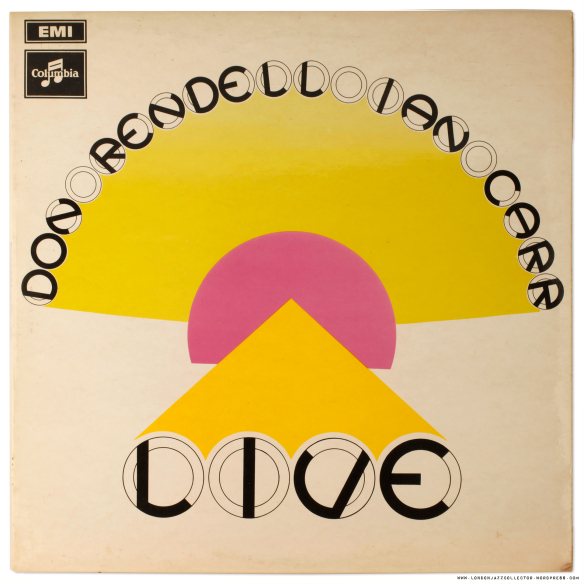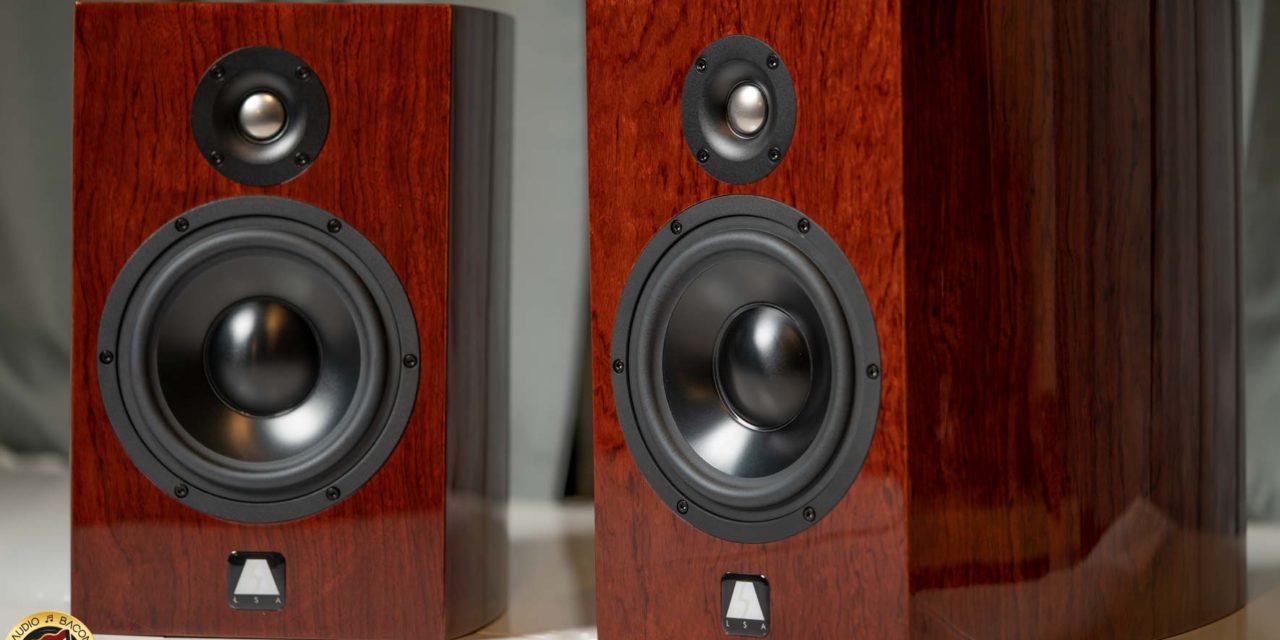Sound
Contents

Tool’s Fear Inoculum is an alt-metal, synth-bound treat. Its underlying thoughtfulness and complexity surely make for an intriguing listening session. It’s also one of those albums that sound much better via a lossless stream such as Tidal versus Spotify.
Within the first few seconds of Pneuma, it’s amazing how well-layered and tight the rapid tugs of strings were. There weren’t just variations in timbre but in palpability. In addition, there’s a certain flair in how the electric guitar grooves along. Especially as the percussions step in. The flow transforms from smooth and elegant – to an approach that’s intentionally gritter and grungier. I mention this because this type of differentiation is typically characteristic of much higher priced loudspeakers.
Hypnotic & Melodic
The words “melodic” and “intentional” fill my notes as I continue my journey through the album. Deep, precise, and eerie bass lingers in Legion Inoculant. Mix that with some scary electric synths and we have something out of the Twilight Zone.
The LSA-10 Statement’s versatility is further pronounced with the percussive precision and resonant cues of Descending and the tangibility of bells in Chocolate Chip Trip. You hear the subtle stereo pans, the rubbing, and etching of metal – all without sacrificing tonality or shine. This is where the 8th-order crossover is working its magic.
Things start getting real with 7empest where the LSA-10 Statement starts to handle the dynamics and sonic overlays with captivating ease and clarity. Guitars play without edge and percussions play without bloat. The sound remains well-composed throughout while giving each performer their space and weight.
Although the album is a masterpiece in its own right, the LSA-10 Statement contributes heavily to this atmospheric and involving album.

Recorded in 1993 in Miami’s Crescent Moon Studios, Gloria Estefan’s Mi Tierra was her first U.S. all-Spanish album. As a tribute to her Cuban heritage, this album beautifully embodies politics, love, dance, and culture. The black and white album photo places her at a Havana nightclub.
This is an album I could listen to critically – or just have it playing in the background.
Out the gate, the LSA-10 Statement does a perfect job of reproducing the vibrant and upbeat atmosphere of this entire album. From the woodwinds, brass, and even the supporting male vocalist – you’re able to hear depth, space, and energy of all the musical pieces. Consequently, this brings to the forefront just how much pride and joy that was given to the production of each track. It’s difficult to listen critically because you’re just enjoying the melodies.
Nirvana in Havana
Estefan’s entire range is on display. This is true from the synergistic and romantic pacing of Tus Ojos to the richer and flute-infused No Hay Mal Que por Bien No Venga. Her voice lingers for the perfect amount of time – as you digest the lyrics. Textural cues are portrayed with elegance and grit while accompanied by melodic delivery. Instruments exhibit natural pitch and exertion – while voices sound elegant and confident. This is also true for Volveras and Montuno where there’s a seemingly impossible mixture of warmth, clarity, and brilliance (that crossover man).
The finale, Tradicion, is done in proper fashion. Aside from percussive gravitas, focus, and wholesome reverberance – the LSA-10 Statement relays tonal shifts, glorious brass, and realistic bells and whistles (literally). After about an hour of fun, the ramp-up and close had me musically satiated. It reminds me of why we’re in this hobby in the first place.
One theme I noticed is that these speakers sing beautifully – even with passive listening. There are a presence and analog-weight to the sound that transports you into the music – regardless of what you’re doing.

Lastly, we have Don Rendell / Ian Carr Quintet Live album. Recorded in 1968 in front of a private audience of British jazz aficionados. This recording is among one of the most nuanced and appreciably improvised sessions. You’re seated in the front row and are presented with one of the best soundstage ever produced by a pair of speakers. Wonderful work by recording engineer David Heelis.
Yet another album the LSA-10 Statement was able to reproduce convincingly – with all of its musical intent intact. From rapid rumbles of fast piano notes to the saxophone and trumpet tag-team – everything is articulated with finesse. Speaking of brass, timbre preservation is world-class. The tonal quality of these speakers makes it easy to hear exactly which instrument is playing.
Praise and Acclaim
Interestingly enough, this also applies to the audience. The cheers and applause have a texture and “pop” where you could visualize the cupping of hands – and even the physique of the enthusiastic fan. Give One Track and Vignette and listen and you’ll get an idea of what I mean.
Regarding the latter track, you’re able to hear the variations of tonal color – especially with the piano and cymbals. You could hear every tap and piano key at the proper speed – with a distinct color. The effect is a melody that is paced and supported by an undeniable application of low-end hum, brilliance, and organics.
This album sounds better when played loud. The LSA-10 Statement. And Emerald Physics 100.2 SE combo are able to do that without breaking a sweat. In fact, I find myself just closing my notebook – and just enjoying the music. These speakers do such a great job of preserving the illusion. I also felt like I was a part of the audience.
vs. ATC SCM7 V3 ($1,750)
I love the ATC SCM7. Check out my review here. If it’s in the recording, this speaker will reveal and reproduce it wonderfully. In comparison to the LSA-10 Statement, the ATC has more shine and resolution. The SCM7 is simply more refined and has a “faster” sound. It breathes more into the room and layers out all the soundstage with precision.
So what does the LSA-10 Statement offer?
Given that the LSA-10 Statement is twice the cost of the ATC SCM7 V3, my expectations were very high. And I wasn’t disappointed.
First, the size of these loudspeakers projects a much larger image. It just fills up more of the space in front of and around you. And accompanying this image is a denser and more molded image of the recording. At the same time, it’s very quiet and silky smooth. Its tonality is also sweet – kinda like maple syrup.

Secondly is bass output. I’ve heard plenty of organ, brass, and drums on this system – but never with this much punch and slam. These speakers will startle you. Give Santana’s Migra a listen – and get bombarded with beautiful bass. As a bonus, it also seems to better align with the output of my JL Audio F110 V2 subwoofer.
In the end, you’re paying for a more forward, tangible, fuller, and more properly weighted sound. There’s an uncanny sense of realism with violins and cellos. As well as the fullness and textural nuances in voices and percussions. It’s warmer than neutral and has a meaty sound with powerful dynamics. It takes your system closer to something that sounds “real.”









Great review, always enjoy your description of the sound you hear and the choice of music too.
Does that mean you’re getting rid of your ATCs? Hope not. 🙂
I’m flattered. Thank you. Nah, I’m just moving the ATC and TToby into another room. I would’ve auditioned the larger (active) ATCs, but they were too wide for my desk. For now…these LSA-10 Statements ROCK. The price doesn’t even make sense.
LSA 10 system sounds impressive and great value too, that’s a rare combination.
The smallest active ATC is the ATC SCM10SE Anniversary, which were designed for the 70th birthday of the ATC founder Bill Woodman.
I’m a very lucky and happy owner of the ATC flagship ATC EL 150A.
Keep up the good work, Jay.
Walter might be the single nicest guy in hi fi. And I know he’s been working on these a long time. I’ll bet they are just stunning.
Hello Jay,
Can you say something about the differences between the statement and signature. What does the Statement bring extra to the table?
Best regards
G
Great review! I’ve been a long time LSA fan. Heard the LSA 1 Signature years ago at CES, being powered by their LSA Signature integrated.
Based on that sound I purchased the LSA 1 Statements, and have been extremely happy with them. Any chance you’ve heard the previous line compared to the current one? I’d love to have a compelling reason to upgrade from the old Statements to the new ones, but I haven’t been able to hear the new version yet. Thank you for any insight.
The comments about this speaker remind me of the audio press reaction to the Totem Model 1 and, especially, the Mani 2. Sounds like a giant killer.
Hi, I enjoyed the review. I was surprised you had these working well on your desktop. Im very curious about how far from the wall you had them? Thanks